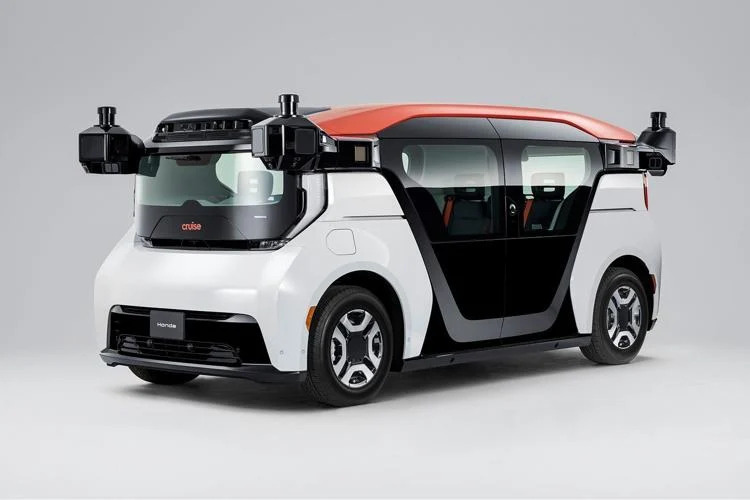General Motors (GM) and Honda have joined forces with Cruise, GM’s autonomous driving subsidiary, to establish a groundbreaking driverless ride-hailing company in Japan. The primary vehicle for this service will be the Cruise Origin, an autonomous electric vehicle that GM produces at its factory in Detroit. This innovative collaboration aims to revolutionize the transportation landscape in Tokyo, Japan’s bustling metropolis. The planned commencement of services is set for 2026, marking a significant milestone in the world of autonomous mobility.
The Cruise Origin is no ordinary vehicle; it is devoid of traditional driving elements such as a steering wheel and pedals, as it has been purpose-built for autonomous operation. Honda played a pivotal role in the design of this futuristic vehicle, working closely with Cruise and GM. Unveiled in 2020, the Cruise Origin offers seating for up to six passengers, who sit facing each other, redefining the traditional vehicle interior.
GM intends to manufacture 500 Cruise Origin vehicles to serve the burgeoning ride-hailing market in Tokyo. This initiative is poised to become Japan’s inaugural autonomous ride-hailing service, with the potential to set new standards in the industry. Notably, Cruise operates as a subsidiary of GM, but Honda has been a significant investor in the California-based company since 2018. Cruise specializes in the development of autonomous driving technology and presently conducts tests and limited ride-hailing services in the United States, employing modified Chevrolet Bolt electric vehicles.
Initially, Cruise plans to test and refine its autonomous vehicle software in Tokyo using Chevrolet Bolt-based autonomous cars similar to those currently operating in San Francisco, Phoenix, and Austin. These vehicles are equipped with conventional steering wheels and pedals, allowing human drivers to take control if necessary.
Cruise’s CEO, Kyle Vogt, expressed confidence that the extensive experience gained by Cruise’s autonomous vehicles in US cities will prepare the joint-venture company for the launch of fully driverless Origin vehicles by 2026.
Operating in Japan presents unique challenges compared to US cities, including driving on the left side of the road, as opposed to the right in the United States. However, Vogt remains confident that the vehicles and software will adeptly adapt to these differences. He remarked, “The range of situations our [autonomous vehicles] have encountered is quite broad,” citing examples like jugglers on the streets of San Francisco and encounters with donkeys in Austin.
This forthcoming driverless ride service aims to address the growing demand for transportation solutions in Japan. The country has grappled with a shortage of taxi drivers, and there is a pressing need for more accessible transportation options for individuals with disabilities, the elderly, and those too young to drive. According to statistics from the Ministry of Internal Affairs and Communications, Japan has the highest proportion of elderly citizens (aged 65 and above) in the world, accounting for 29.1% of the population.
In addition to this partnership, Honda and GM have collaborated on various projects, including the development of hydrogen fuel cell technology. Honda also has plans to manufacture and sell electric vehicles in the United States, leveraging GM’s engineering expertise.
It’s worth noting that Cruise recently became the subject of a US federal investigation into the interaction of its vehicles with pedestrians. The National Highway Traffic Safety Administration received reports of two incidents involving pedestrians injured by Cruise vehicles and identified two additional incidents in online videos. Despite this, Vogt expressed confidence in the safety of Cruise vehicles compared to human drivers and welcomed the opportunity to cooperate with investigators.
The GM-Honda-Cruise partnership represents a significant leap forward in the realm of autonomous mobility. The introduction of the Cruise Origin and the planned driverless ride-hailing service in Tokyo in 2026 hold the promise of reshaping transportation in Japan, addressing critical needs, and setting new standards for safety and convenience in the world of autonomous vehicles.
